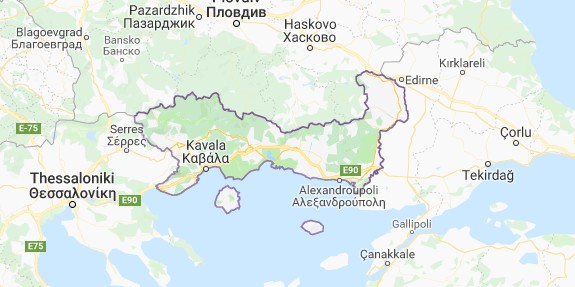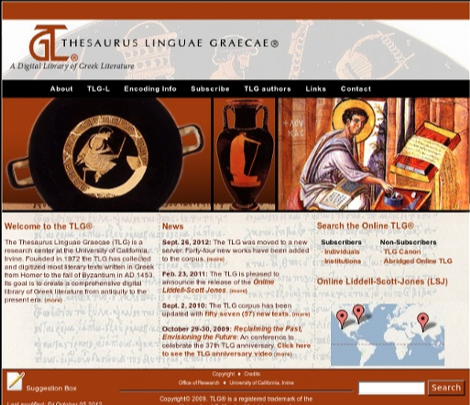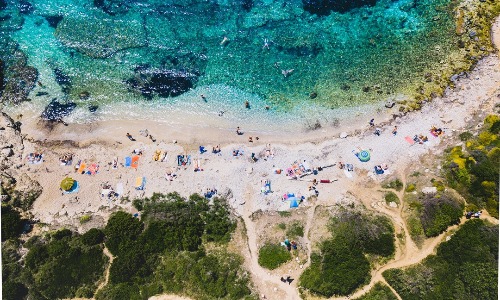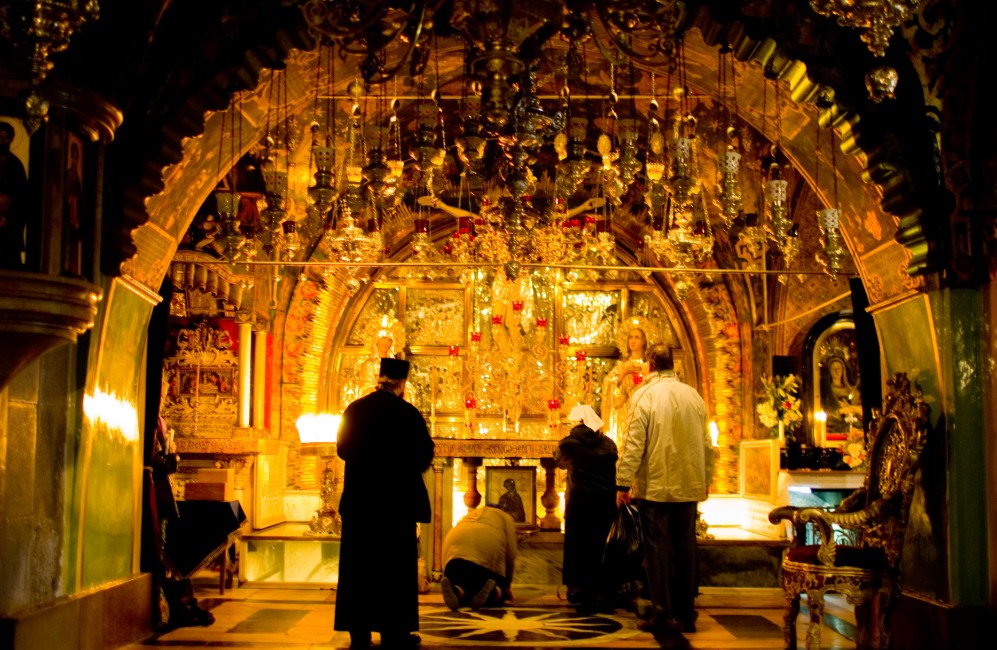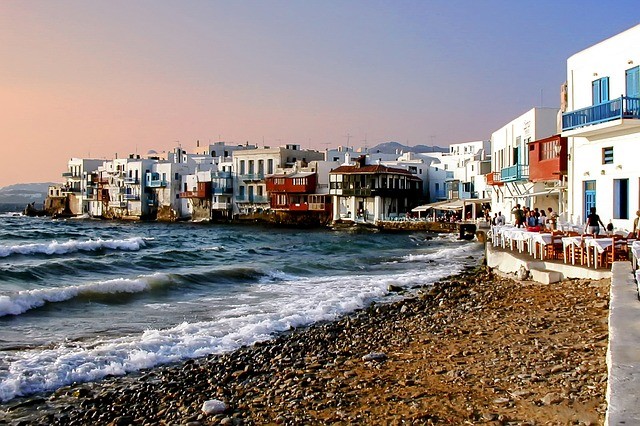
The metro network of Athens is one of the most contemporary in Europe and has been described as a monumental achievement, a source of life for the city, an underground modern day museum. In the first years of its operation, it has managed to enhance positive changes in the daily lives of the Athenians.
It offers fast and reliable mobility. It has significantly contributed to the decongestion of traffic and the reduction of air pollution. It has given a new lease of life to the neighbourhoods located near the metro stations, which have been notably upgraded.
It comprises of 2 underground lines and 23 stations, while it also connects with a train line [line 1, which is indicated as a green line on maps], with the tram line, and with the new suburban railway line, the “proastiakos.” Line 2 [indicated by a red line] connects the southern and western suburbs of the Attica area with central Athens. Line 3 [the blue line] connects the northern and eastern suburbs with the centre. It is considered that presently, only 72% of its constructional plan has been completed, although extensions to both metro lines, facilitating even more areas of the capital, are anticipated.
It is estimated that the metro is used daily by hundreds of thousands of Athenians and tourists, as it is undoubtedly the fastest and most convenient method of transport within the city. The timetables are very frequent as the trains pass through the stations every 3 minutes during peak hours and every 5-10 minutes, the remaining time. The ticket costs 0,80 cents [a little more expensive than the bus] while tickets issued are, valid for a 90 min duration, one day and monthly passes. Accordingly, students are entitled to reduced rates. The operating hours of the metro are from 07.00 am to 00.30 at night.
A Contemporary Underground Museum
The construction of an underground train network in a city such as Athens was not an easy task. With consideration to its wealthy history, it is not a wonder that the construction companies frequently discovered in their path, significant valuable, historical finds which had to be saved. Some of these finds, as well as artwork by contemporary Greek artists, can be admired in the metro stations today. In particular:
Line 2
- Dafni station: At the entrance of the station there is a small stratigraphical exhibit [sedimentary bed exhibit], a small scale archaeological excavation, as well as artwork by Dimitri Mytara -Dexileos- which comprises of four pieces in total.
- Syngrou-Fix station: On the central forefront of the first level of the station, one encounters the artwork by Takis, “Fotina Siniala” [Light codes] and “Fotovoltaiki Energia,” [Photovoltaic energy] found on each side, which was specifically designed for this station
- Acropolis station: On the platform level, there are replicas of the east pediment and the north frieze of the Parthenon, photographs of Melina Mercouri, who apart from artist, governmental minister and international ambassador for the Greek culture, was also one of the first persons who requested the return of the Parthenon marbles to Greece. One may also find an enlarged watercolour painting by Wilhelm von Weiler from 1834-1836, depicting the army hospital, one of the first neoclassical buildings of Athens, located on the corner of Markriyianni and Dionysiou Aeropagitou streets. In addition, a showcase of archaeological exhibits and sediment bed displays are found on the second level of the station as well as a photograph of an underground drainage pipe and other archaeological finds.
- Syntagma station: This is the most complex station of the metro network and the most impressive. The multi-leveled structure enhances the display of the exhibits, as with the “Clock of the Metro,’ created by Theodorou, a large archaeological dig, 42m long, and a roman mosaic floor on the first level. On the surface level of the station the artwork by G. Zoggolopoulos, “Aithrio” [Atrium] is located.
- Panepistimiou station: Here wall creations by G. Morali and archaeological exhibits from the excavation are on display.
- Omonia square station: Omonia square station was transformed completely, and other than the photographs depicting historical Athens which are located on the surface level, on the first level the artwork “Oura” by N. Kessanli can be found displaying life-like images and instances of the crowd passing through the station, a characteristic scene of day to day life in Athens. On the interchange platform, is the artwork by Pavlou, dedicated to football and athletics, which also relates to urban life.
- Larissis station: Here on the platform, in the direction for Omonia, the well-known “Anthropakia” [Little Men] by G. Gaitis can be found.
- Metaxourgio station: On the first level of the station, the artwork “Mythos tis geitonias mou” by Aleko Fasianou is located.
Line 3
- Evangelismou station: Here are located display cases of archaeological exhibits, a small sediment bed exhibit on the first level, as well as the creation “Mott Street” by Chrisa, a composite of aluminum steel and synthetic material, illuminated by fluorescent light in the back of it. Outside the station, the art work of Zoggoloupoulos, “Kolona” can be found.
- Megaro Mousikis station: The station is decorated with photographs of the incomparable soprano, Maria Callas, and the composer D. Mitropoulou and the artwork “Boumboulina,” by G. Feidaki.
- Ambelokipi station: In this station, one may find the artwork “Procession/Pombi,” by S. Andonakou, which distracts your attention from the platform to the surface level, lining the same path as the passengers, with multi-coloured neon pipes amusingly designed on the ceiling.
- Ethinikis Aminas: On the ticket office level of the station, one may find the artwork work by K. Tsokli, “ Ipogeio Parko” [underground park]. It portrays a row of trees which are mirrored in three directions, enhancing the sensation of depth within the station as if there were a small grove. On the platforms one may admire the sculptures by Greek artists, no longer with us, such as “Stili,” by K. Loulopoulou, “Nouvelle generation IX,” by K. Koulentianou and the creation by D. Kalamara, “O Thniskon Polemistis.”
- Doukissis Plakentias station: Here, the theme of industrial design is pre-dominant.
A Brief History
Line 1 [H.S.A.P] operated for the first time in 1869, connecting Athens with Piraeus. Initially, steam powered trains were used, but in 1904 it became electrified. In 1976, it became state property. Today it serves 24 stations.
Construction for the two metro lines began in 1996. Fifty per cent of the funding for this work was provided by the Greek state and 50% by the European community. The first stations commenced operations in 2000. The project is not considered to be finished as there are plans for extensions for the two lines.

